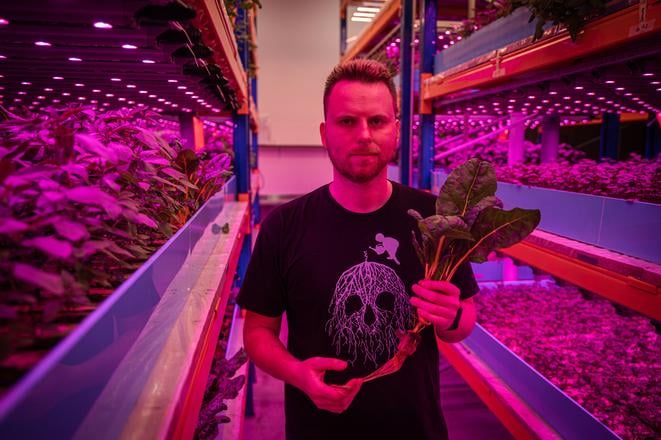Travelling in South America just over a decade ago, Filip Toška came across the Mayan calendar and the culture’s prophecy of the end of the world.
Toška, from Bratislava, says it was then that he started to think about ways of producing his own food.
Back home, he put some of his ideas into action. Traditional methods of agriculture, i.e. growing crops in the soil, had not appealed to him, and instead he started using aquaponic, and later, hydroponic cultivation to produce fruits and vegetables.
Today, he runs a farm, Hausnatura, on the first floor of a former telephone exchange in Bratislava’s Petržalka district, growing salads and herbs.
“Building a hydroponic farm is easy; but to maintain the entire system so that the plants have everything they need and will grow is very difficult,” said Toška. “There’s a whole science behind it.”
From fish to nutrient solution
Toška built his first aquaponic growing system in the basement of a block of flats in Petržalka more than 10 years ago.
One of his inspirations was Australian farmer Murray Hallam, who makes aquaponic farms that people can set up in the garden, or on the balcony, of their own homes.
Toška’s system comprised of a tank in which he kept fish, using their excrement to produce nutrients for plants, and another where he kept the plants. Water circulated between the two.
He grew tomatoes, strawberries and cucumbers at first, for his own consumption.
Then, after a few years, he moved his project to an electrical engineering school in Petržalka where students were taught how an ecosystem can be automated so that it does not need to be controlled by humans.
“There’s a lot of potential in this system as the measurement of temperature, humidity and other parameters can be very well automated,” explained Toška, who is a graduate of the Faculty of Electrical Engineering and Informatics.
Not long afterwards, and with the help of a Slovak investor, he set up the Hausnatura farm.
He no longer breeds fish – he says aquaponic cultivation created problems in reacting to surges or falls in demand for the farm’s vegetables – and has switched to hydroponic cultivation, growing plants in a nutrient solution.


